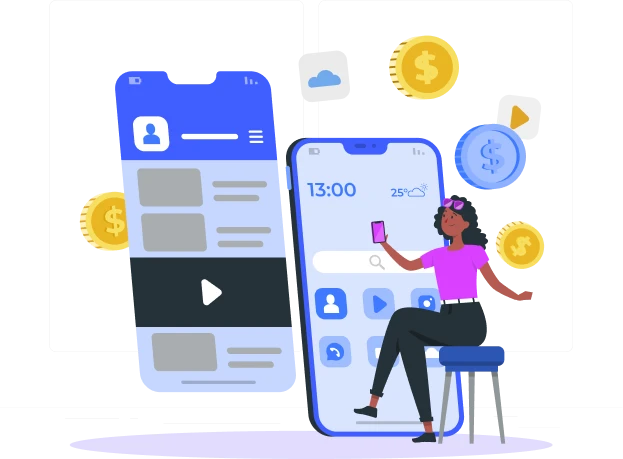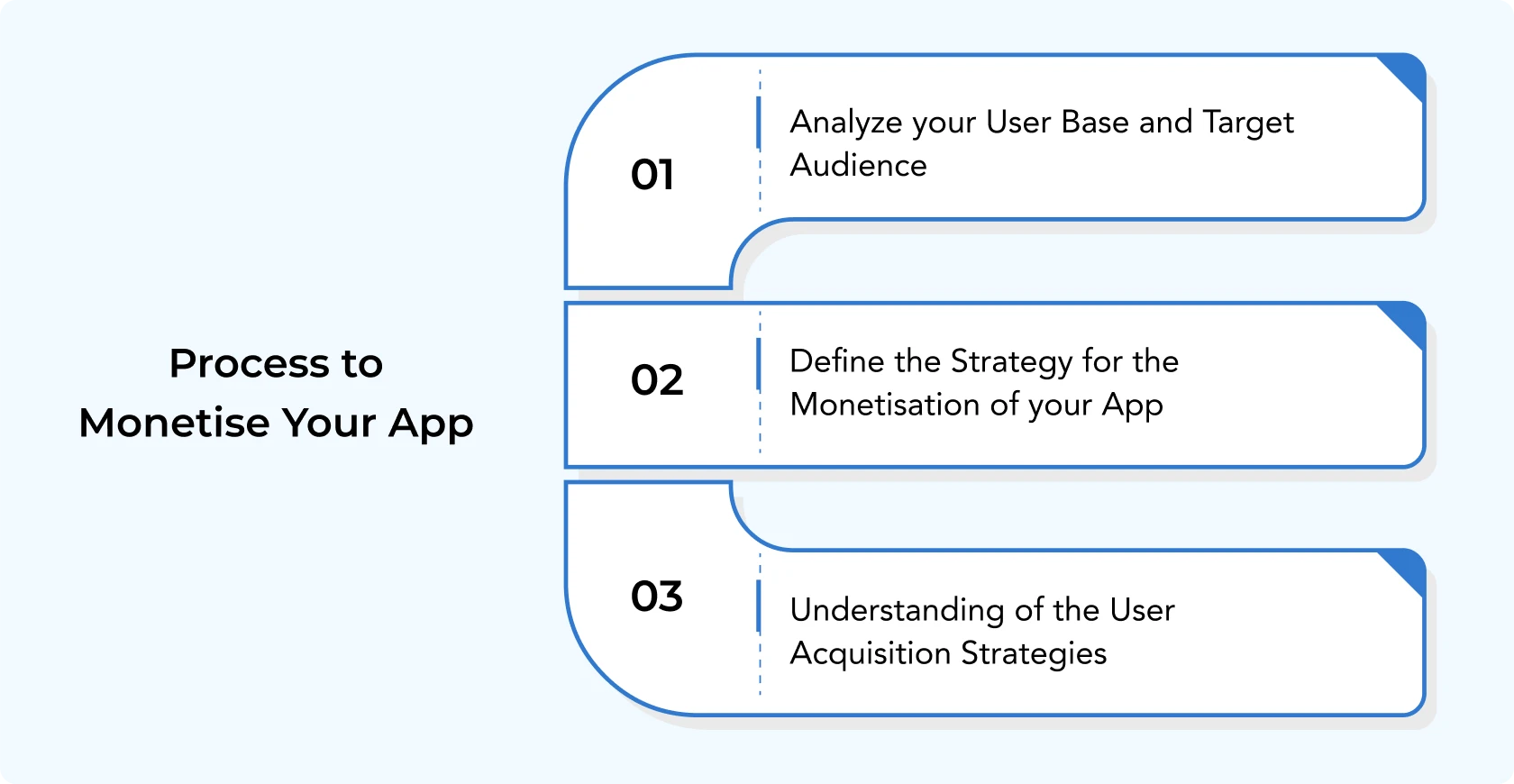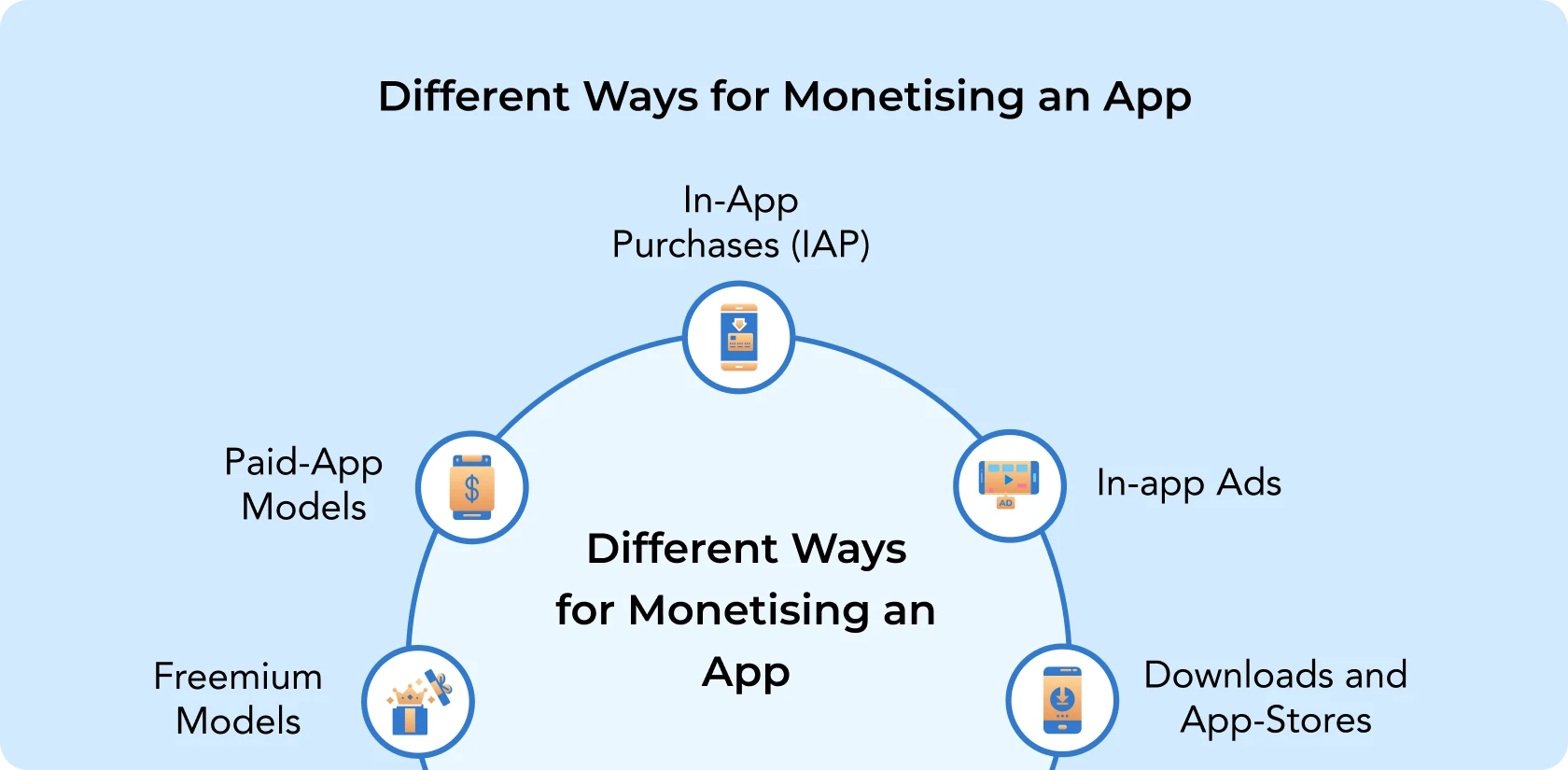
Connect With Us
Let’s create something extraordinary. Connect with Sunrise Technologies today!

When the question arises about launching a mobile application for your business, innovation is not the limitation to ensuring the success of your concept in this oversoaked market. In June 2023, about 90000 mobile applications were published alone in the Google Play Store. With this vast success volume, there is no guarantee that your app might succeed as well.
But on the other hand, the mobile application market generated an amazing revenue of about $600 billion in the past few years. The profit potential in this flourishing ecosystem is massive, provided you know the process of app monetisation strategy. This article is a complete guide for knowing the techniques, models and strategies that can help transform the idea of your mobile application into a supportable stream of revenue.
The concept of Mobile App Monetisation simply means the process to earn revenue through your mobile app. Many models and strategies need to be implemented so that you can earn from the users of your app. For instance, you have launched a fitness app. You can earn from it by offering premium workout videos, displaying ads to your users, and selling fitness goods.
So, in a way, there are various ways to monetise your mobile application, each with its disadvantages and perks. It is necessary to know the challenges and the benefits side by side and choose the one that will be right for your audience and your business strategy.
For instance, if you have an app for learning languages and it offers some premium features. You can make an investment in improving the quality and include some more new languages. It is beneficial both for you and your users.
Steps to monetise your app effectively:

It is necessary for you to understand your users, their pain points, and preferences. This information helps in tailoring your monetisation strategy. For example, if you have a gaming app for adults, offering an in-app buying option for the additional levels or characteristics can be the right process to make your app monetise. But if your app is for children, it will be more ethical and efficient to generate revenue with the help of in-game advertisements that are properly moderated.
In the end, you have to choose a model for monetisation aligning with the purpose of your app and its user base. Common models that are included are paid, freemium, and in-app ads. For instance, for a food recipe app, offering the basic recipes in the free version and advanced cooking tutorials in the premium section is an applicable strategy.
You can explore more on the methods for attracting new app users and continue with the existing ones as well. You can get help from Social Media Marketing (SMO), App Store Optimization (ASO), and partnerships to reach a wider range of audiences, boosting your online presence. Do not forget to run your targeted ads and get involved in app promotion on social media platforms. In this way, you can reach potential users that could be interested in your app.
The main secret to opting for app monetisation is focusing on profitability in the long run. You must continuously update your app, engage with the users, and adapt to emerging trends. When you are in the long haul of launching your app, you need to consider sustainability and scalability during the time of crafting the strategy on app monetisation. But before all that, let us look at the app monetisation methods that are used commonly.

The freemium models provide the free version of your app with paid upgrades that are optional. Users can either choose to buy the premium features and content or the basic features for free. For instance, Candy Crush Saga is a free gaming app, but it also allows in-app buying options for extra lives and hints.
In the paid-app model, users can pay a one-time fee for downloading and using your app. With this approach, it assures the users to get their values immediately, as they get full access to the features of the app, without any further advertisements and purchases. For instance, the Minecraft app needs users to buy it before downloading and it offers a whole gaming experience without any extra cost.
It is not the only model that offers its users the chance to buy virtual content, upgrades or goods, in both free and premium modes. For example, the Android mobile app for taking notes, Good Notes used mainly on tablet devices requires users to buy an annual subscription or to pay a one-time fee, also enabling the users to make in-app purchases like stickers.
You can also generate revenue by displaying advertisements like video ads or banner ads in your app. Banner ads are less encroaching than the ads that are in full screen. They are mostly found at the bottom or top of your screen. On the other hand, Video ads provide fascinating content during natural breaks. The key to success is balancing user experience and revenue from the ads.
For your mobile app, you should select the right app store. You should also consider factors like platform compatibility and target audience. Boosting the app downloads through effective user reviews, marketing and techniques of ASO. For instance, Revolute, the finance app creates encouragement among the users inviting their friends by offering redirected rewards, resulting in more and more downloads of the app.
For an acceptable revenue stream, you can offer various tiers of subscription with features that are specific and will encourage the users to subscribe to more paid content. For example, the popular music app, Spotify offers their users free, premium and family subscriptions, each with different benefits.
A foolproof plan for generating revenue by attracting users for your app is collaborating with influencers or brands to promote the services and products in your app. For instance, a running app can collaborate with a sportswear brand for sponsored rewards and challenges.
You can also earn commissions through the services and products that are affiliated with your app. This means when your app users click on the affiliated links and buy, you get a specific percentage of the revenue. For example, a recipe app can add links to kitchen equipment, and the app owner can earn a commission from each sale made from the link of the app.
To make your app stand out in the competitive market, making a strategy to monetise a mobile app for your business is an important part of the success of your business. This article was presented by us, Sunrise Technologies. We are a mobile app development company in Australia that not only helps a business create a tailor-made mobile app but also helps to make the app stand out in the app store. Whether you want to add more features to your app or want to monetise it, we will help you in every step.
Sam is a chartered professional engineer with over 15 years of extensive experience in the software technology space. Over the years, Sam has held the position of Chief Technology Consultant for tech companies both in Australia and abroad before establishing his own software consulting firm in Sydney, Australia. In his current role, he manages a large team of developers and engineers across Australia and internationally, dedicated to delivering the best in software technology.
Let’s create something extraordinary. Connect with Sunrise Technologies today!

MLC Centre, 19-29 Martin Place, Sydney, Australia 2000

56 Palmerston St, Perth WA 6000, Australia 2000

14 Mason Street , Melbourne, VIC - 3175, Australia 2000

80 Ann, Brisbane, QLD-4000, Australia 2000

Level 7, 143, MGR Main Rd, Perungudi, Chennai - 600096, India

Binary Tower, 20th Floor, Office Number 96, Business Bay, Dubai, UAE
You cannot copy content of this page